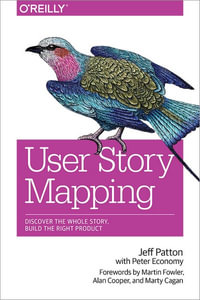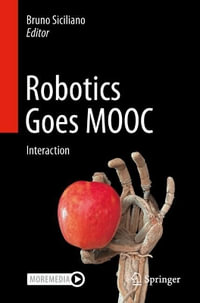| Deviation and association patterns for subgroup mining in temporal, spatial, and textual data bases | p. 1 |
| The paradox of the heap of grains in respect to roughness, fuzziness, and negligibility | p. 19 |
| Rough sets - what are they about? | p. 24 |
| Reasoning about data - a rough set perspective | p. 25 |
| Information granulation and its centrality in human and machine intelligence | p. 35 |
| Classification strategies using certain and possible rules | p. 37 |
| Well-behaviored operations for approximate sets | p. 45 |
| Searching for frequential reducts in decision tables with uncertain objects | p. 52 |
| A new rough set approach to multicriteria and multiattribute classification | p. 60 |
| A heuristic method of model choice for nonlinear regression | p. 68 |
| How a new statistical infrastructure induced a new computing trend in data analysis | p. 75 |
| Some remarks on networks of parallel language processors | p. 83 |
| Molecular computation for genetic algorithms | p. 91 |
| Marcus contextual languages and their cut-and-paste properties | p. 99 |
| Contextual multilanguages: a learning method | p. 107 |
| On recognition of words from languages generated by linear grammars with one nonterminal symbol | p. 111 |
| Approximation spaces and definability for incomplete information systems | p. 115 |
| Intrinsic co-Heyting boundaries and information incompleteness in rough set analysis | p. 123 |
| Multifunctions as approximation operations in generalized approximation spaces | p. 131 |
| Preimage relations and their matrices | p. 139 |
| Cellular neural networks for navigation of a mobile robot | p. 147 |
| The Takagi-Sugeno fuzzy model identification method of parameter varying systems | p. 155 |
| Sensing of arc length and wire extension using neural network in robotic welding | p. 163 |
| Traffic signal control using multi-layered fuzzy control | p. 171 |
| Approximation region-based decision tables | p. 178 |
| A model of RSDM implementation | p. 186 |
| Handling queries in incomplete CKBS through knowledge discovery | p. 194 |
| Learning logical descriptions for document understanding: a rough sets-based approach | p. 202 |
| Integrating KDD algorithms and RDBMS code | p. 210 |
| Fast discovery of representative association rules | p. 214 |
| Rough classifiers sensitive to costs varying from object to object | p. 222 |
| Soft techniques to data mining | p. 231 |
| Business process understanding: mining many datasets | p. 239 |
| A genetic algorithm for switchbox routing problem | p. 247 |
| On the benefits of random memorizing in local evolutionary search | p. 255 |
| An application of genetic algorithms to floorplanning of VLSI | p. 263 |
| Learning with delayed rewards in ant systems for the job-shop scheduling problem | p. 271 |
| Fuzzy extension of rough sets theory | p. 275 |
| Fuzzy similarity relation as a basis for rough approximations | p. 283 |
| Approximation spaces in extensions of rough set theory | p. 290 |
| On generalizing Pawlak approximation operators | p. 298 |
| Real-time real-world visual classification - making computational intelligence fly | p. 308 |
| Fractal operator convergence by analysis of influence graph | p. 316 |
| Pattern recognition by invariant reference points | p. 322 |
| An analysis of context selection in embedded wavelet coders | p. 330 |
| Equivalent characterization of a class of conditional probabilistic independencies | p. 338 |
| A new qualitative rough-set approach to modeling belief functions | p. 346 |
| On stability of Oja algorithm | p. 354 |
| Transform vector quantization of images in one dimension | p. 361 |
| Daubechies filters for 2D wavelet transforms | p. 369 |
| Some heuristics for default knowledge discovery | p. 373 |
| Fuzzy partitions II: belief functions. A probabilistic view | p. 381 |
| Frameworks for mining binary relations in data | p. 387 |
| Handling continuous attributes in discovery of strong decision rules | p. 394 |
| Covering with reducts - a fast algorithm for rule generation | p. 402 |
| Syntactical content of finite approximations of partial algebras | p. 408 |
| A new approach to linguistic negation based upon compatibility level and tolerance threshold | p. 416 |
| Some issues on nondeterministic knowledge bases with incomplete and selective information | p. 424 |
| The OI-resolution of operator rough logic | p. 432 |
| Pedagogical method for extraction of symbolic knowledge from neural networks | p. 436 |
| Wavelets, rough sets and artificial neural networks in EEG analysis | p. 444 |
| Parallel computation of reducts | p. 450 |
| Rough rules in Prolog | p. 458 |
| Tuning the perceptual noise reduction algorithm using rough sets | p. 467 |
| Modelling medical diagnostic rules based on rough sets | p. 475 |
| Discretization of continuous attributes on decision system in mitochondrial encephalomyopathies | p. 483 |
| Approximate time rough control: concepts and application to satellite attitude control | p. 491 |
| Some relationships between decision trees and decision rule systems | p. 499 |
| On decision trees with minimal average depth | p. 506 |
| On diagnosis of retaining faults in circuits | p. 513 |
| On the depth of decision trees for diagnosing of nonelementary faults in circuits | p. 517 |
| Discovery of decision rules by matching new objects against data tables | p. 521 |
| Rule+exception modeling based on rough set theory | p. 529 |
| On finding optimal discretizations for two attributes | p. 537 |
| Discretization problems for rough set methods | p. 545 |
| Rough mereology for industrial design | p. 553 |
| Optimal stochastic scaling of CAE parallel computations | p. 557 |
| CBR for complex objects represented in hierarchical information systems | p. 565 |
| Application of the information measures to input support selection in functional decomposition | p. 573 |
| Modelling social game systems by rule complexes | p. 581 |
| Analysis and synthesis of information systems with information relationships and measures | p. 585 |
| Approximations in data mining | p. 589 |
| Purchase prediction in database marketing with the ProbRough system | p. 593 |
| Rough sets in optical character recognition | p. 601 |
| ROSE - software implementation of the rough set theory | p. 605 |
| Rough sets and bayesian methods applied to cancer detection | p. 609 |
| Rough sets and neural networks application to handwritten character recognition by complex Zernike moments | p. 617 |
| Author Index | p. 625 |
| Table of Contents provided by Blackwell. All Rights Reserved. |
























